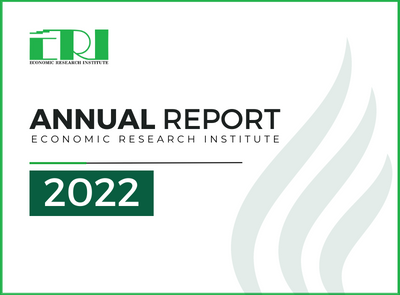Over the last decade, the government of Mongolia has implemented a series of policy reforms designed to enhance economic growth and reduce poverty with a more pro-poor orientation. The Mongolian economy has grown considerably since 2003 however, social development and specifically living standards of the population, have not experienced the same progress, contributing to poverty and inequality. The main objective of this research is to provide a preliminary analysis of the patterns of the middle class in Mongolia since no study has yet addressed this issue in the Mongolian context. This research was carried out using both qualitative and quantitative methods with specific purposes. Analysis using the absolute approach based on the average monthly consumption distribution shows that the middle class constitute 49.2% of the population in Mongolia. Middle class households tend to have no children or fewer children and tend to have completed secondary education or higher and work more in the public or private sector. Regarding the welfare profile, salary constitutes the largest income for the middle class. Public transfers such as pension and other allowances is the second highest source of income for all regions. Not surprisingly, livestock business income is the core income source in the countryside. Focus group participants reported that, in general, livelihood has improved as compared to 5 years ago.
 mn
mn en
en- Нүүр хуудас
- Бидний тухай
ERI нь чанарын өндөр түвшний, мэргэжлийн хөндлөнгийн хяналтаар шүүгдсэн, хараат бус байдлаа хадгалж чадсан, оновчтой асуудал дэвшүүлсэн бодлогын шинжилгээ, судалгааны ажлыг хийх, санхүүжүүлэх, эдгээр судалгаануудын гол үр дүнг нийтэд ойлгомжтой байдлаар интернэтээр болоод бусад мэдээллийн арга хэрэгслээр сурталчлах, бодлогын судалгаа хийх хэрэгцээг тодорхойлж төрийн болоод бусад байгууллагуудад танилцуулахад гол үйл ажиллагаагаа чиглүүлэх юм.
- Мэдээ, мэдээлэл
Манай хүрээлэнгээс зохион байгуулж буй хурал болон судалгаа, шинжилгээний ажлуудтай холбоотой мэдээллүүд.
- Манай Судалгаа
Манай хүрээлэнгийн хийгдэж байгаа судалгаа, хийгдсэн судалгаанууд мөн ERI сэтгүүлд хэвлэгдсэн судалгааны ажлуудыг энэхүү цэсээс авах боломжтой.
- Судалгааны сан
Олон улсын байгууллага болон Монгол улсын судалгаа, шинжилгээний газруудын эдийн засгийн чиглэлээр хийгдэж байгаа болон хийгдсэн судалгааны ажлуудын санг бид энэхүү сандаа бүрдүүлж байна.
- Холбоо барих
